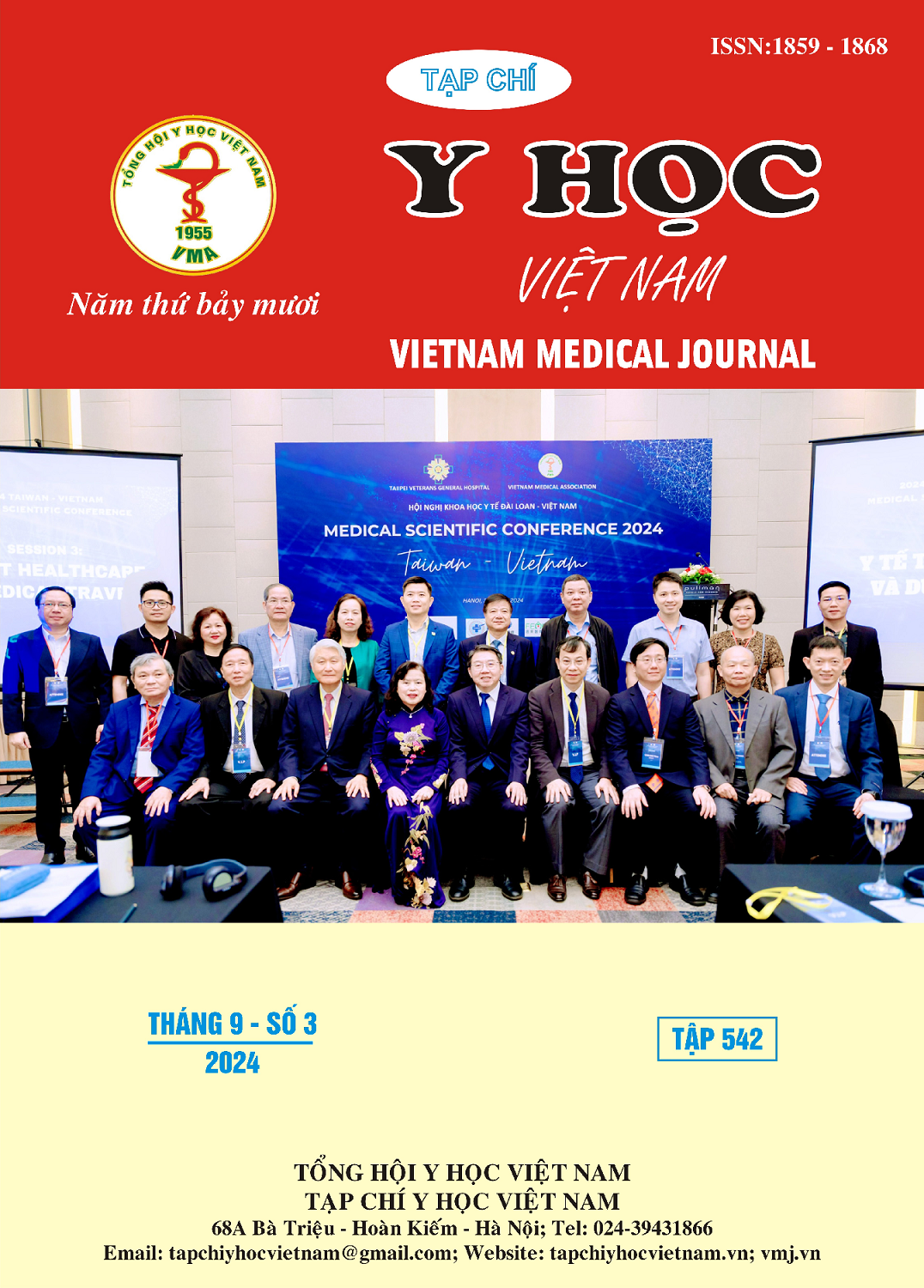CLINICAL, SUBCLINICAL CHARACTERISTICS AND RESULTS OF DENTAL IMPLANT TREATMENT WITH SURGICAL GUIDE IN PATIENTS WITH LOSS OF MANDIBULAR MOLARS
Main Article Content
Abstract
Objective: To describe the clinical, subclinical characteristics and evaluate implant stability, peri-implant bone loss after implant surgery in patients with loss of mandibular molars. Materials and methods: A cross-sectional descriptive study conducted on 31 patients with loss of mandibular molars who were assigned and agreed to undergo implant surgery at Ho Chi Minh city Odonto-Stomatology hospital from April 2023 to April 2024. Results: In the study, the mean age of the patients was 6.58 ± 12.37, the age group ≤ 45 accounted for 80.7%, and women accounted for 72.0%. Regarding clinical characteristics, caries is the most common cause of loss of lower molars (45.2%), the most popular location is first molar (77.4%). Regarding subclinical characteristics, most patients have thick gingival phenotype (64.52%), the mucosal thickness covering the region that the implant is placed was 2-3 mm, accounted for 58.06%. Bone density is mainly D2 (45.2%) and D3 (32.3%), D4 is the lowest (9.6%). Regarding treatment characteristics, the most used implant diameters are 3.8 mm and 4.2 mm (35.5% and 38.7%), and 77.4% of patients used 10 mm long implants. Treatment results recorded that the mean initial stability of the implant was 75.88 ± 7.80, and in most positions, ISQ tended to gradually increase over the survey times (p < 0.05). The mean level of peri-implant bone loss increased at 6 months compared to 3 months post-surgery (1.09 ± 0.67 and 1.39 ± 0.75, p = 0.004). Conclusion: Patients with loss of mandibular molars are mainly due to tooth decay as the main cause and mostly in tooth 6, the most common is the gingival pattern and thick mucosa along with bone density D2, D3. Guided implant surgery is effective in restoring lost mandibular molars when good initial stability is achieved and gradually increases, while the level of bone loss is acceptable.
Article Details
Keywords
Mất răng cối lớn hàm dưới, cấy ghép nha khoa, máng hướng dẫn, độ ổn định, tiêu xương quanh cổ implant.
References
2. Nguyễn Nhật Đăng Huân, Nguyễn Minh Tuấn, Lê Nguyên Lâm. Điều trị mất răng cối lớn thứ nhất hàm dưới bằng implant tức thì tại bệnh viện Trường Đại học Y Dược Cần Thơ. Tạp chí Y Dược học Cần Thơ. 2021;37:97-103.
3. Nguyễn Võ Đăng Quang, Lê Nguyên Lâm, Hồng Quốc Khanh. Đánh giá kết quả điều trị phẫu thuật cấy ghép vùng răng sau hàm dưới bằng máng hướng dẫn phẫu thuật. Tạp chí Y Dược học Cần Thơ. 2022;53:112-120.
4. Ngô Anh Tài, Trương Nhựt Khuê, Trần Huỳnh Trung. Khảo sát đặc điểm răng cối lớn có chỉđịnh phẫu thuật nha chu làm dài thân răng trên lâm sàng và trên phim chụp cắt lớp vi tính với chùm tia hình nón tại bệnh viện Trường Đại Học Y Dược Cần Thơ năm 2021-2023. Tạp chí Y Dược học Cần Thơ. 2023;64:124-130.
5. Aragoneses J.M., Aragoneses J., Brugal V.A., Gomez M., Suarez A.. Relationship between implant length and implant stability of single-implant restorations: A 12-month follow-up clinical study. Medicina (Kaunas). 2020 May 27;56(6):263.
6. Farzad P., Andersson L., Gunnarsson S., Sharma P. Implant stability, tissue conditions, and patient self-evaluation after treatment with osseointegrated implants in the posterior mandible. Clin Implant Dent Relat Res. 2004; 6(1):24-32.
7. Fu P.S., Lan T.H., Lai P.L., et al. Implant stability and marginal bone level changes: A 2-year prospective pilot study. J Dent Sci. 2023 Jul;18(3):1272-1279.
8. Galindo-Moreno P., Catena A., Pérez-Sayáns M., et al. Early marginal bone loss around dental implants to define success in implant dentistry: A retrospective study. Clin Implant Dent Relat Res. 2022; 24(5):630-642.
9. Matsumoto K., Inoue K., Imagawa N., et al. Examination of factor to influence dental implant stability quotient change. J Hard Tissue Biol. 2020;29(2):131-134.


